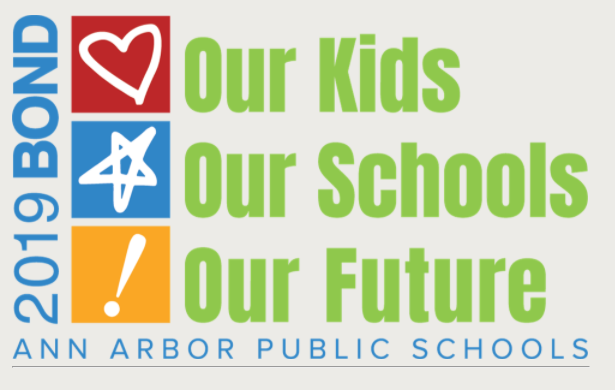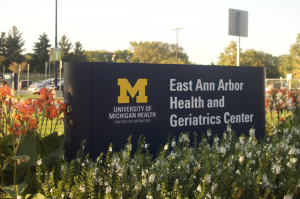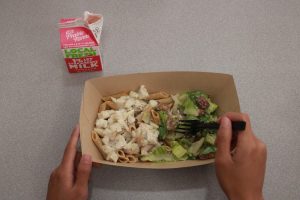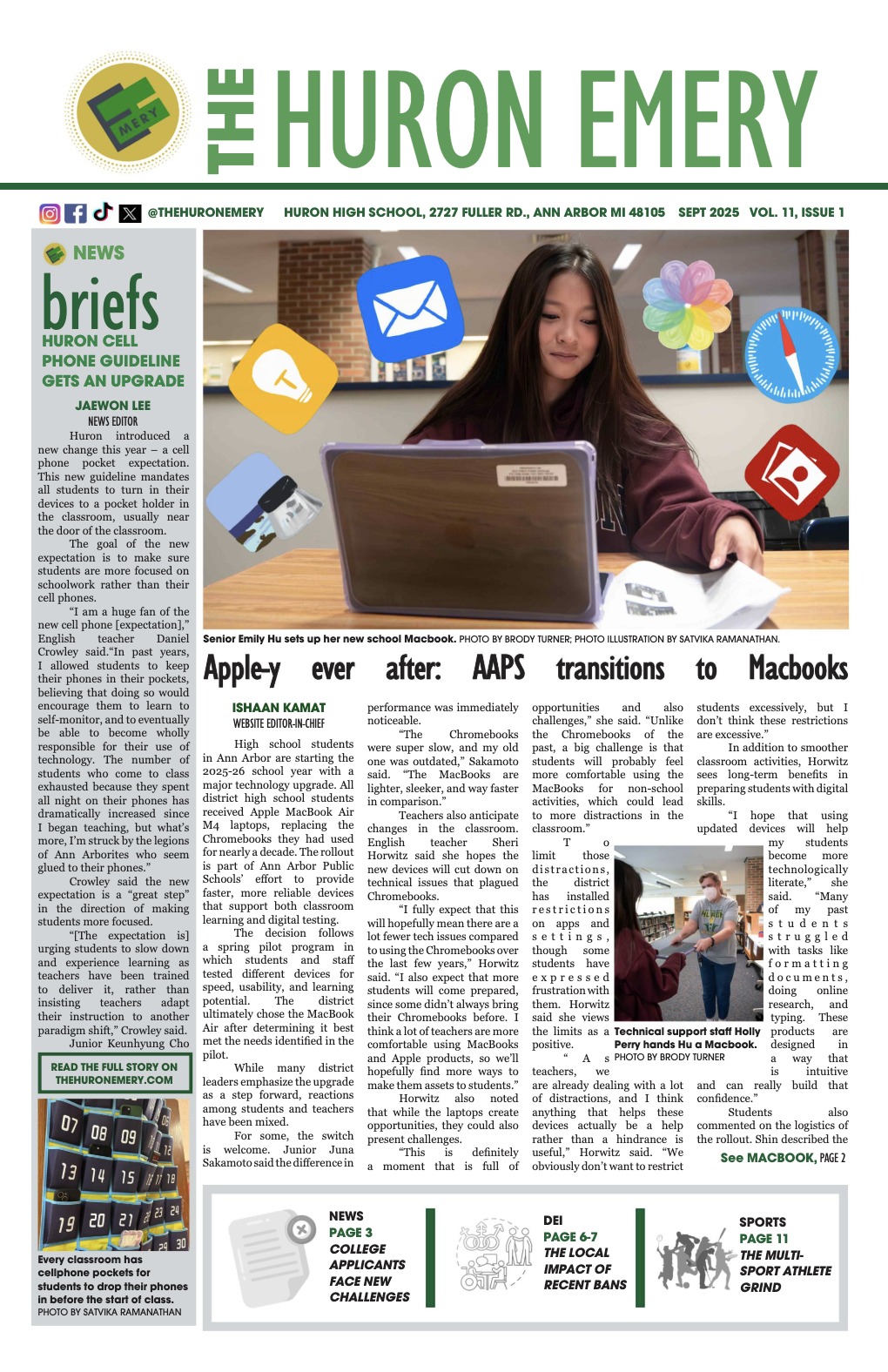The One Billion Dollar Bond
Provided by Ann Arbor Public Schools
A logo promoting the new bond that will be implemented. Logo provided by the Ann Arbor Public Schools.
November 7, 2019
Ann Arbor Public Schools asked for $1 billion. And they got it. According to the Washtenaw County Clerk, of the 117,795 registered voters in Washtenaw County 20 percent, or 23,559, came to vote on the bond. These numbers are down from the last November in 2018 election where 62.91 percent, or 182,153, of voters participated.
“Quality public schools remain a fundamental bedrock of a successful democracy and are an outcome of strong, successful communities,” Ann Arbor Public Schools Superintendent Jeanice Swift said. “Safe, efficient and well-maintained schools are a clear indicator of the health and vibrancy of a community. We are grateful that with this vote, the Ann Arbor community has affirmed this priority.”
From 1922 to 2008 AAPS has spent over 100 million dollars to build the schools and the 2019 bond will add $1 billion more to that total. On Nov. 5, Ann Arbor residents chose to increase to fund the expansion of the schools.
“The specifics for how it’s going to look in each particular building are going to be unique and different just like each building is unique and different,” AAPS Director of Communications Andrew Cluley said. “The concept is that all the buildings across the district, at a level, will all get the same basic thing.”
Over the next 20 years the funds will improve the learning environments of all of the schools. Some focuses that relate to Huron High School specifically would include adding sustainable energy sources, improving the performing arts by buying new instruments and improving performing spaces, as well as media center renovations.
“Now that the bond was passed they can work with architects to work on which things will come first,” Cluley said. “When it is approved by the board the first public announcement will be released. I would imagine those will probably come in the spring or even earlier. They want to get working on these projects as soon as possible.”
The main thing that this bond cannot be used for is teacher salaries.
“What the voters voted on is agreeing to increase taxes to pay back for the bonds that will be used for improvements on the school,” Cluley said.
So far, AAPS has the first couple of years of the proposal planned out. Most renovation will occur during the summer. However, if the construction takes longer than summer vacation on a certain school, AAPS still has a way for students to attend school.
“One of the first things that we’re going to be doing is building two staging schools,” Cluley said. “It’ll be a facility so that if we determine that the construction project is going to be so significant, the students in that school will move into this new school for a year. At the end of the school year, they’ll be able to go back to their school and then it’ll be a different school that will come to that staging school.”
After the staging schools are done being used for schools that are under construction, they will transition into two new schools for AAPS. AAPS is working on improving the quality of the school atmosphere. For example, AAPS wants to improve the quality of food being served in the cafeteria. Currently, most of the cafeteria food being served is first prepared at Ann Arbor Pioneer High School and later transported to the individual schools.
“We will be making kitchen upgrades so that every school will be able to cook the food freshly, so they’ll be right there as it got cooked, not reheated,” Cluley said. “Also, as part of the proposal, there would be a guaranteed school garden at every school. The goal of that is partly to do more teaching and learning in those gardens, but you’ll also be able to eat some of that food.”
The bond will also pay for MakerSpaces, electric buses, gender neutral bathrooms, and solar panels.
At the Ann Arbor Board of Education meeting on Oct. 23, 2019 community members expressed their support for Ann Arbor Schools, and also wanted to know more about the bond. Simona Butler, a mother of two children at AAPS shared her concern for the current systems of support during public commentary. Many community members highlighted that there was overcrowding in classrooms, which diminished the quality of the education.
“I see how difficult it is first hand for the two-second grade teachers to maintain safety and overall order to 29 students,” Butler said. “Children are disadvantaged because there are too many students. We chose to be in the AAPS system because we knew that it’s very high-quality education and to be put in the situation where our teachers aren’t getting enough support is shocking to me.”
Another community member, a substitute teacher, and coach at Slauson Middle School Bethany Williston, discussed the treatment of AAPS’ teachers and the current issue of resignations.
“I was part of over 100 parents who sent an email to the board of education expressing our concern with the amount of staff who have left,” Williston said. “It’s been overwhelming. Dr. Swift said that they conduct climate surveys regularly. We want to see the results [of the climate survey] we don’t want to just hear what the team says are the issues.”
A reoccurring overall concern is that there are problems within Ann Arbor Public Schools, problems that need to be solved now rather than later. While these issues may be reoccurring and present, the problems aren’t something that will be tackled in a short period of time.
“Unfortunately, the seniors and the juniors probably aren’t going to personally get to experience those changes,” Cluley said. “Hopefully when you come back to your school in a couple of years, you’ll be able to say ‘oh man this is awesome, I wish I had this when I was here!’”












Zain Charania • Nov 27, 2019 at 4:23 pm
This was very informative, I think the bond should and shouldn’t have been passed at the same time. Being an AAPS student I am excited to see what the future holds now the new bond has been passed, but the only problem being is teacher salaries. These teachers sometimes work a 10-12 hour work day and when they go home they have more work to do. They deserve more credit then they have.